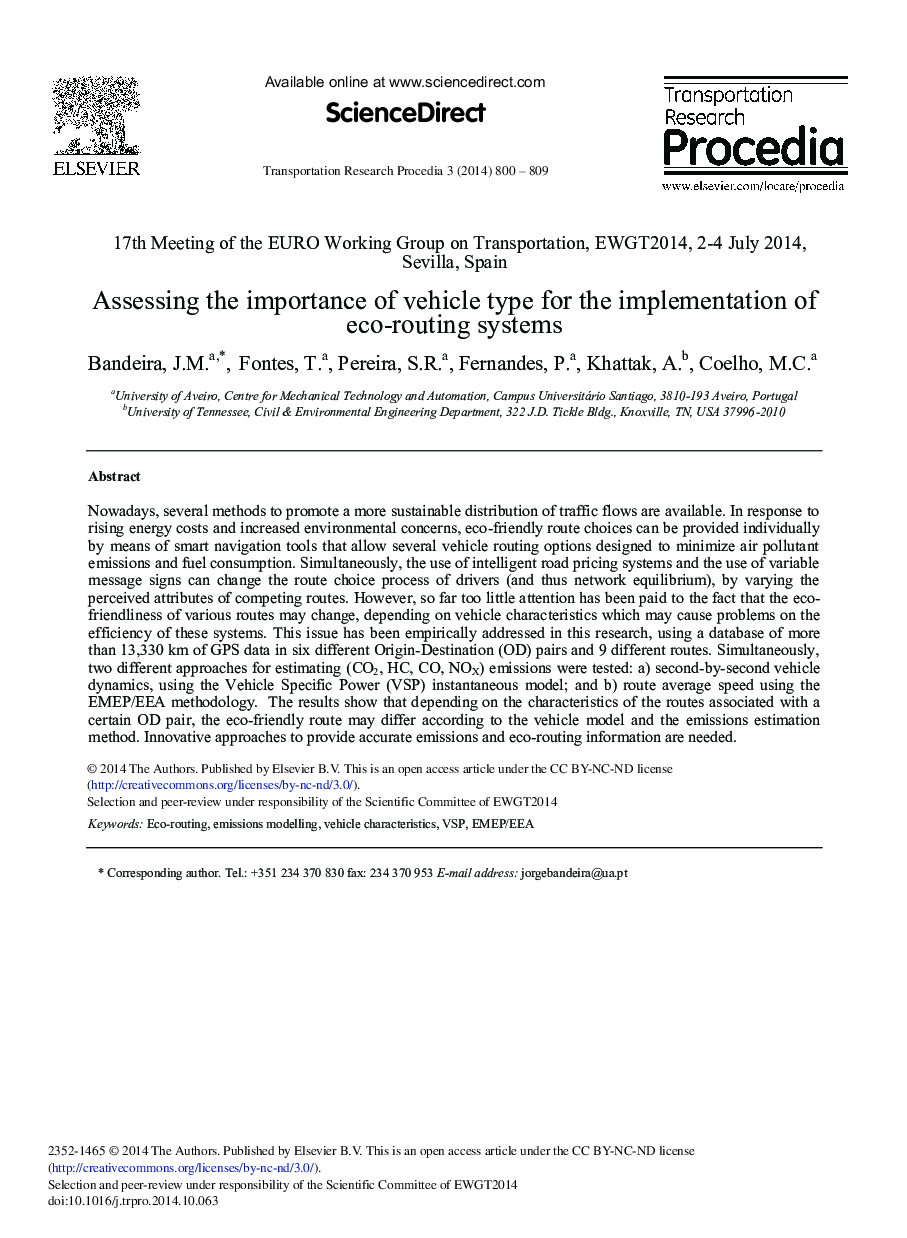| کد مقاله | کد نشریه | سال انتشار | مقاله انگلیسی | نسخه تمام متن |
|---|---|---|---|---|
| 1106460 | 1488292 | 2014 | 10 صفحه PDF | دانلود رایگان |
Nowadays, several methods to promote a more sustainable distribution of traffic flows are available. In response to rising energy costs and increased environmental concerns, eco-friendly route choices can be provided individually by means of smart navigation tools that allow several vehicle routing options designed to minimize air pollutant emissions and fuel consumption. Simultaneously, the use of intelligent road pricing systems and the use of variable message signs can change the route choice process of drivers (and thus network equilibrium), by varying the perceived attributes of competing routes. However, so far too little attention has been paid to the fact that the eco-friendliness of various routes may change, depending on vehicle characteristics which may cause problems on the efficiency of these systems. This issue has been empirically addressed in this research, using a database of more than 13,330 km of GPS data in six different Origin-Destination (OD) pairs and 9 different routes. Simultaneously, two different approaches for estimating (CO2, HC, CO, NOX) emissions were tested: a) second-by-second vehicle dynamics, using the Vehicle Specific Power (VSP) instantaneous model; and b) route average speed using the EMEP/EEA methodology. The results show that depending on the characteristics of the routes associated with a certain OD pair, the eco-friendly route may differ according to the vehicle model and the emissions estimation method. Innovative approaches to provide accurate emissions and eco-routing information are needed.
Journal: Transportation Research Procedia - Volume 3, 2014, Pages 800-809
